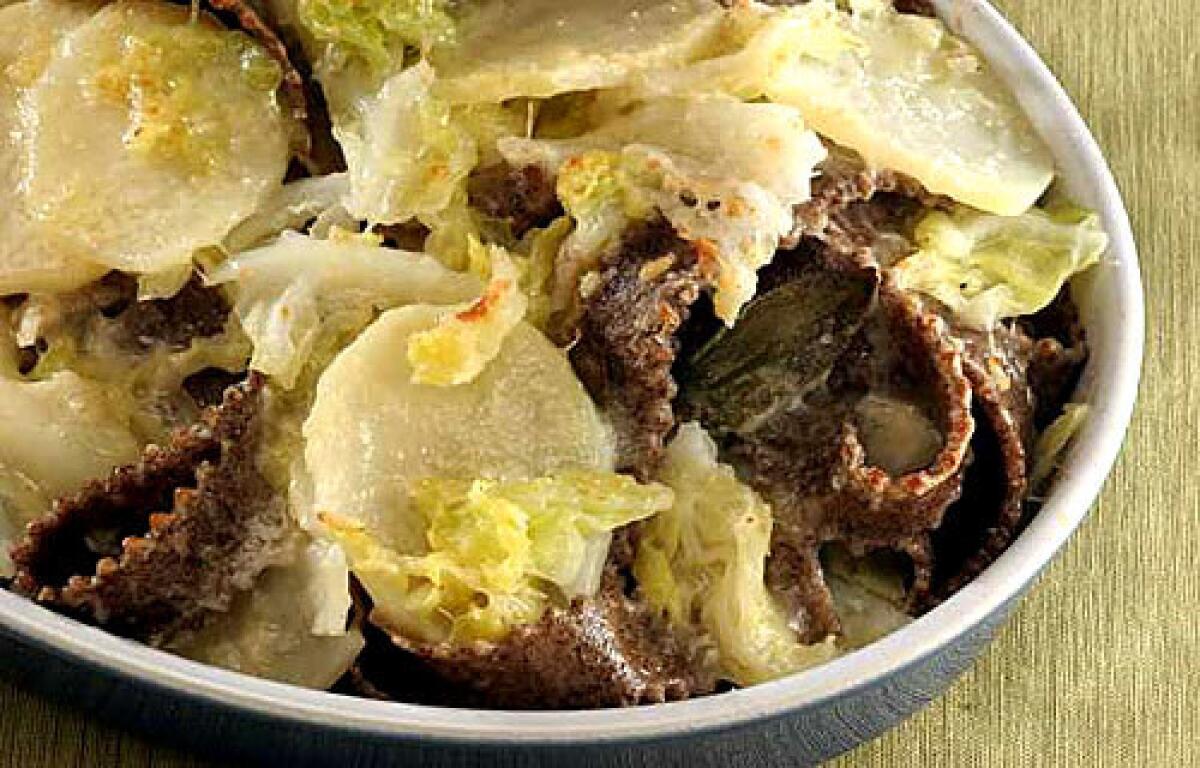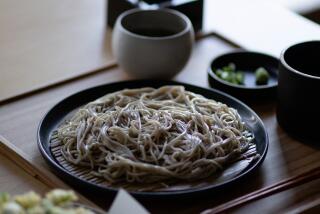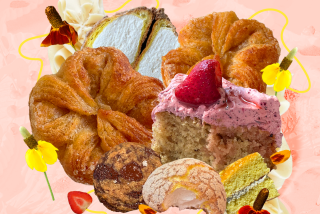Buckwheat flour in baking and cooking

Buckwheat may seem like an old familiar in savory Breton crepes or in earthy, nutty Japanese soba noodles, but it’s also a uniquely versatile ingredient that can be baked into biscuits, rolled into Italian pasta and embraced in other ways that might surprise even, say, a veteran cookie baker. Cookies become crumblier, pancakes have a richer crumb, pasta remains firmer, and they all benefit from buckwheat’s nuttiness, its texture and substance.
Buckwheat’s subtle flavors also mingle well with such seasonals as avocados, black kale and goat’s cheese.
One of the oldest crops in the world, buckwheat grows in climates ranging from the highest fields of the Tibetan plateau to the lowest reaches of Australia and has been integrated into cuisines around the world for the last 8,000 years.
Traditional Russian blini are made with buckwheat flour; they’re similar to crepes but are made with a yeasted batter. Buckwheat has a distinct flavor that holds up to the addition of caviar, crème fraîche and minced raw onion.
And there are variations on this theme. Ingredients with a velvety mouth-feel can mimic the richness of crème fraîche. Mash avocados, whip Greek yogurt, blend goat’s cheese or fresh creamy ricotta. Caviar provides a tangy saltiness, but replace it with a tart-sweet ingredient and blini become a light delicious dessert. Try fresh local figs, grapes, dates or pomegranate.
For many years the secret ingredient of gluten-free bakers, buckwheat flour has caught the attention of other cooks. Buckwheat is a seed, not a grain -- that’s why the flour doesn’t act like regular wheat flour in cooking. When buckwheat is milled, it produces a powder that is far more absorbent than wheat flour. Think of it almost as a nut meal. For this reason, it is usually augmented with some wheat flour for structure.
Cookies made with buckwheat flour have an incredible texture, crisp and crumbly yet tender. The flavor of buckwheat is rich and subtle, a natural with rich nuts such as walnuts.
Although the idea of making soba noodles from scratch often leaves adept cooks trembling, pizzoccheri, an Italian analogue made with buckwheat flour (called farina di grano saraceno in Italian) mixed with durum wheat flour, is much simpler. Pizzoccheri dough is more than double the amount of semolina to buckwheat, making for a more glutinous mixture that gives the dough better structure and makes it easier to knead, roll and cut.
Like soba noodles, pizzoccheri are cut with a knife instead of being squeezed through a pasta-cutting machine.
But pizzoccheri are flat and thickly cut, with a pleasingly homey appearance and varying widths, and served with a comforting mixture of soft potatoes, creamy melted cheeses and fresh greens. It’s the buckwheat pasta -- dense (in a seasonally appropriate way, with just enough spring) and flavorful -- that makes it rustic and elegant.
Spevack is a freelance writer.
.
More to Read
Sign up for The Wild
We’ll help you find the best places to hike, bike and run, as well as the perfect silent spots for meditation and yoga.
You may occasionally receive promotional content from the Los Angeles Times.










